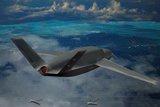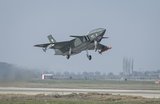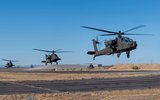FLIR Defense to provide 125 electro-optic sensors to US Coast Guard
Deliveries are expected to begin in Q4 2025. (Photo: USCG)
Teledyne FLIR Defense has been awarded a US$74.2 million Indefinite Delivery Indefinite Quantity (IDIQ) contract to supply 125 Electro-Optic Sensor System-Modernized (ESS-M) systems for use on USCG Helicopters.
The systems are for the USCG’s Sikorsky MH-60 and Eurocopter MH-65 helicopters. The ESS-M platform features a full-HD sensor suite and updated user interfaces, as well as processing capabilities and software enhancements to support future growth.
The ESS-M system provides high-definition daylight, low light, and infrared imagery and will be used in support of USCG missions such as coastal security, search and rescue, and drug and migrant interdiction.
The 40-plus MH-60Ts in
Already have an account? Log in
Want to keep reading this article?
More from Air Warfare
-
![Airbus MQ-72C Lakota Connector progress on track ahead of pending USMC decision]()
Airbus MQ-72C Lakota Connector progress on track ahead of pending USMC decision
The MQ-7C uncrewed aircraft is currently undergoing further internal flight tests ahead of a government test event anticipated for next year.
-
![November Drone Digest: GA-ASI eyes Middle East for Gambit, Edge Group unveils new UAVs]()
November Drone Digest: GA-ASI eyes Middle East for Gambit, Edge Group unveils new UAVs
In November 2025, GA-ASI unveiled a new Gambit variant, the Gambit 6, and appears to be pitching the aircraft series to various customers in the Middle East, which is a fast-emerging CCA market. The Dubai Airshow also saw the unveiling of various Emirati aircraft from Edge Group.
-
![Baykar’s Kizilelma drone makes progress with first air-to-air kill]()
Baykar’s Kizilelma drone makes progress with first air-to-air kill
This test is the latest milestone achieved by the indigenous drone, destroying a target using a beyond-visual-range missile.
-
![Lockheed plans further solid rocket motor investment in Europe and Middle East]()
Lockheed plans further solid rocket motor investment in Europe and Middle East
The company has worked to heavily invest in its solid rocket motor production capabilities, both in the US and internationally, to build a strong supply chain to meet growing demand.
-
![Boeing to build Apache AH-64E attack helicopters for Poland, Egypt and Kuwait]()
Boeing to build Apache AH-64E attack helicopters for Poland, Egypt and Kuwait
The $4.7 billion international order for the three countries will see production conclude around May 2032.






















